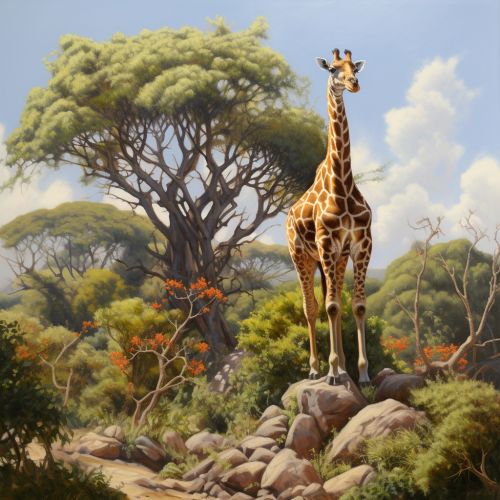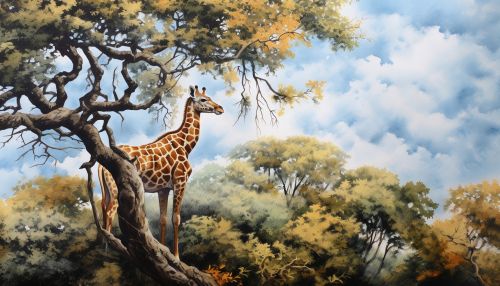Even-toed ungulates
Taxonomy and Evolution
Even-toed ungulates, or artiodactyls, are a large order of mammals that includes many familiar species such as pigs, sheep, deer, giraffes, and cattle. The term "even-toed" refers to the characteristic feature of this group: most members bear weight equally on two (the third and fourth) of their five toes, unlike other mammals, which typically bear weight on all toes.
The order Artiodactyla is part of the larger group of mammals known as ungulates, which also includes the odd-toed ungulates (Perissodactyla), such as horses and rhinoceroses. The two groups are distinguished by the number of functional toes in their foot structure, among other anatomical differences.


Artiodactyls first appeared in the early Eocene epoch, around 54 million years ago. The earliest known artiodactyls were small, forest-dwelling creatures. Over time, they diversified into a wide range of forms, including the massive Indricotherium, the largest land mammal ever to have lived, and the aquatic whales, which are now classified within the Artiodactyla as the suborder Cetaceans.
Anatomy and Physiology
Artiodactyls are characterized by a number of unique anatomical features. The most distinctive of these is the structure of their feet. Most artiodactyls have two functional, or "weight-bearing", toes on each foot, with the remaining toes either reduced or lost entirely. This is in contrast to the odd-toed ungulates, which typically have one or three weight-bearing toes.
Artiodactyls also have a unique type of dentition, or tooth arrangement, characterized by a gap, or "diastema", between the front teeth (incisors and canines) and the back teeth (premolars and molars). This allows them to both crop vegetation with their front teeth and grind it with their back teeth, an adaptation to their predominantly herbivorous diets.
Another key feature of artiodactyls is their complex ruminant digestive system, which allows them to extract nutrients from plant material more efficiently than other mammals. This system involves a four-chambered stomach and a process of regurgitation and re-chewing, or "rumination", to break down tough plant fibers.
Diversity and Distribution
Artiodactyls are among the most diverse and widespread groups of mammals, with over 220 extant species distributed across all continents except Antarctica. They inhabit a wide range of habitats, from deserts and grasslands to forests and mountains.
The order is divided into several families, each characterized by distinct morphological traits. The Suidae (pigs and boars), for example, are characterized by their omnivorous diet and robust body structure. The Cervidae (deer) are known for their antlers, which are typically grown by males and shed annually. The Bovidae (cattle, goats, sheep, and antelopes) are distinguished by their horns, which are permanent and present in both sexes in most species.
Conservation and Human Interaction
Many species of artiodactyls have been domesticated by humans for their meat, milk, hides, and as beasts of burden. However, several species are also threatened by habitat loss, hunting, and disease. Conservation efforts for these species often involve habitat protection, hunting regulation, and captive breeding programs.
